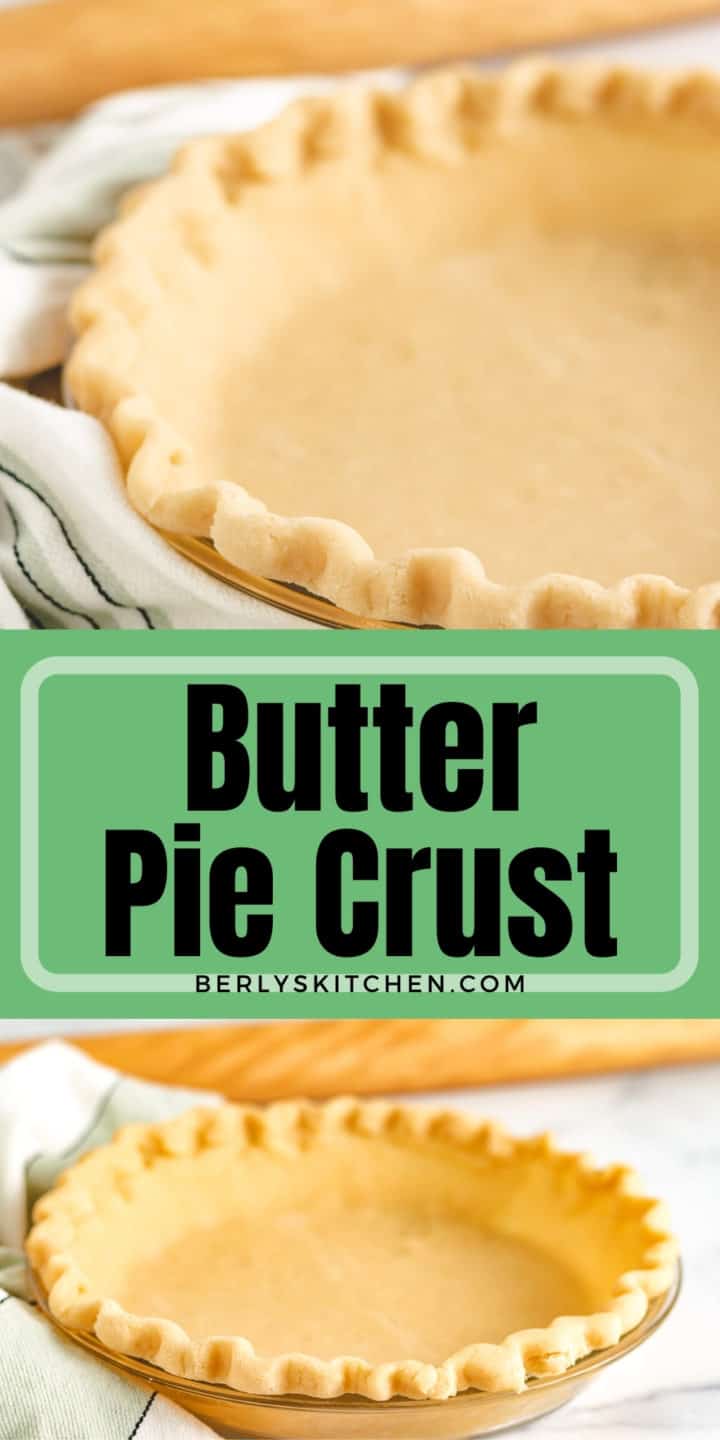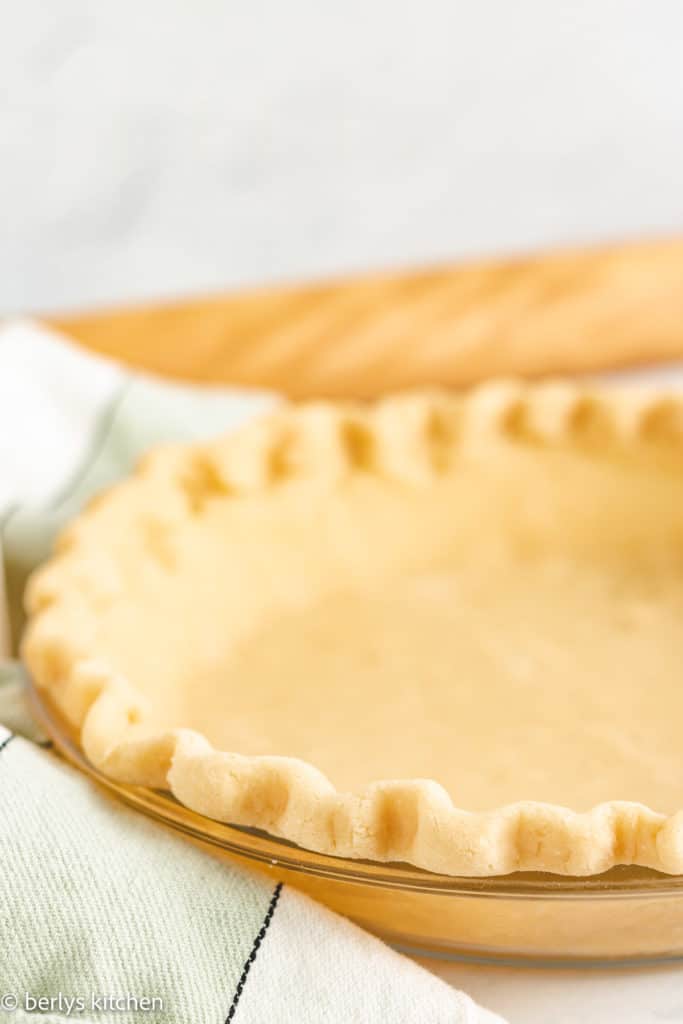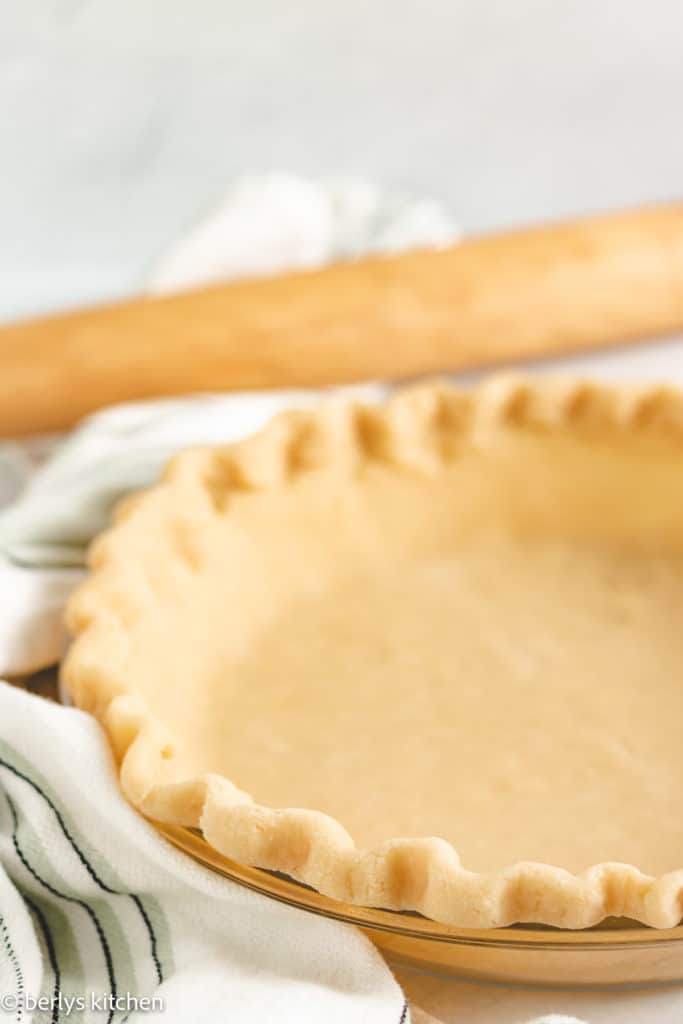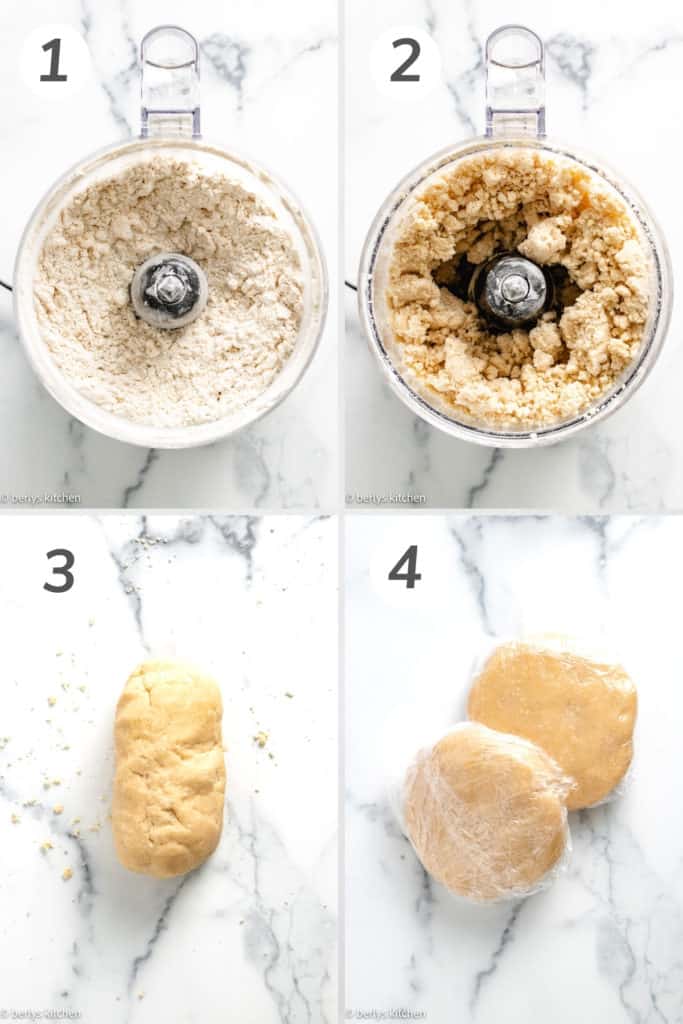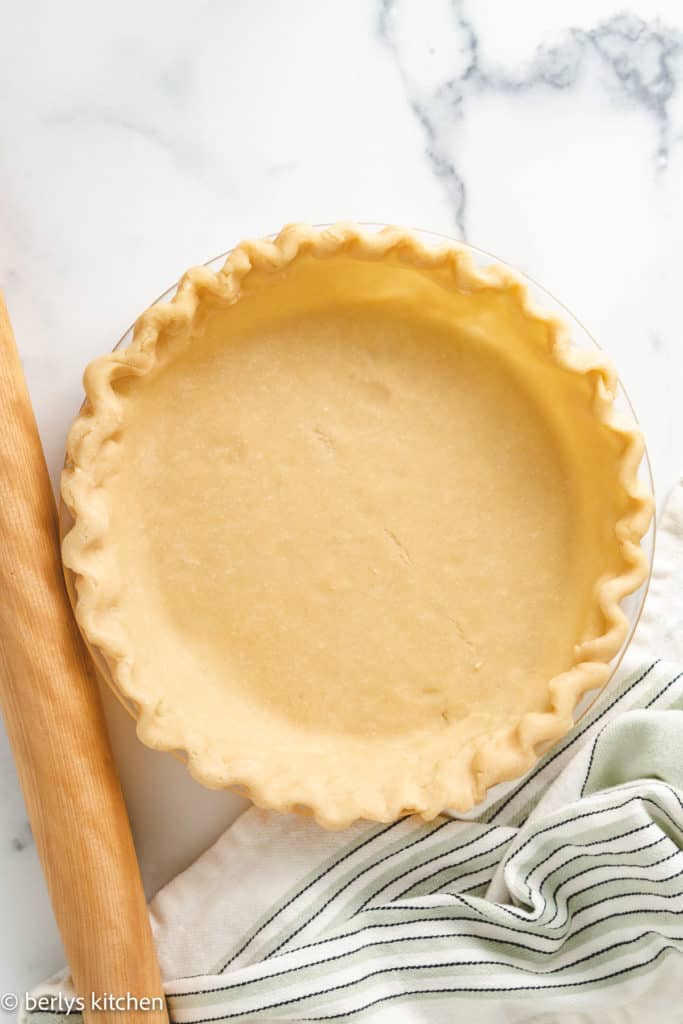Homemade Butter Pie Crust
This quick and easy Homemade Butter Pie Crust uses 4 simple ingredients to make the perfect buttery crust for any pie. Use it for savory dishes like a breakfast quiche, or use it as the base for your favorite sweet desserts!
When it comes to making pies, you have two options. Buy a store bought pie crust, or make your own from scratch. Although buying them premade is a much-needed shortcut sometimes, don’t underestimate how easy it is to make your own pie crust!
Once you realize that it takes only 4 simple ingredients and 30 minimal prep time, you’ll be making your pie crusts from scratch for every holiday which will make everything taste that much better. All you’ll need is flour, butter, salt, and water and the help of a food processor to make it happen.
Ingredients You’ll Need
- All-Purpose Flour – This is the main ingredient in the crust that creates the dry base.
- Cold Butter – When mixed with flour, butter turns the flour into a buttery flaky crust when baked. We recommend using brand name butter!
- Salt – Helps to balance the plain flour and flavors of butter.
- Ice Cold Water – Helps to form a crust dough without melting the butter so it keeps a proper texture.
How To Make Butter Pie Crust
- Combine the flour and butter: Using a food processor, combine the cold butter with flour along with the salt. Pulse until a coarse damp cornmeal texture is formed.
- Add the water: Slowly pour in the water while the food processor is running to create an even texture. Once the dough can be pressed together, it’s ready to remove.
- Form into a ball: Remove and place on a flat cold work surface, and form the dough into a ball. You may need to add water a tablespoon at a time if it’s too dry.
- Let it chill: Divide the dough into 2 halves, then wrap in plastic wrap and refrigerate for 1 hour.
- Flatten into crusts: Once the dough has firmed up, place on a floured work surface and let sit for 10 minutes. Roll out the crusts using a rolling pin into a 12-inch circle that is ¼ inch thick.
- Add to pie pans: Fold each crust into 4ths to prevent breaking, then unfold onto a 9-inch pie pan and press it into the plate. Trim the edges then crimp using your fingers or a fork. Add to the fridge for at least 1 hour before using for baking.
Butter Pie Crust Recipe Tips
- This dough firms up in the fridge twice before using. Although it may be tempting to skip this step, it’s important that the butter in the dough does not melt or the texture will not be of pie crust quality.
- Keep any work surfaces as cold as possible when forming the dough and moving it to the pie pans.
- The second crust can be used for a completely different recipe, or it can be used to top the pie for a double crust. Store in the fridge while filling the pie to keep it cold while preparing.
- If you’d like to make thicker pie dough, simply double the ingredients.
- If you are using salted butter, omit the salt in the ingredients.
- Don’t overwork the dough! This will cause the natural gluten strains to become tough.
- When it comes to adding water, always add less to start and gradually add more until the correct texture is formed.
Variations
- If you’re making butter pie crust for a sweet recipe, feel free to add sugar, or brown sugar to the flour before mixing with butter.
- Make a chocolate butter pie crust by adding a few tablespoon of cocoa powder to the flour before mixing with butter.
- Cinnamon or pumpkin pie spice gives this pie crust a great warm flavor for holiday desserts.
- Make this crust by hand using a pastry cutter and a grater to grate the butter into small shreds to help incorporate it into the flour.
Storing and Freezing:
Storing: If you’re making homemade pie crust ahead of time, store it in the fridge BEFORE rolling into circles. Tightly wrap the dough in plastic wrap then store in the fridge for up to 5 days. Make sure you let it sit at room temperature for 10 minutes before rolling.
Freezing: If freezing for later. Wrap the dough balls tightly in plastic wrap, then a layer of aluminum foil to prevent freezer burn. The crust will stay fresh for up to 3 months. Thaw in the fridge overnight before setting at room temperature before rolling out.
Is pie crust better with butter or shortening?
Butter adds a FAR better flavor than shortening as its rich creamy flavor is natural and has real butter flavor.
What kind of butter do you use for a butter pie crust?
The best butter to use is very cold unsalted butter. This gives the flour a good base to work with and will pair well with any filling you add.
How do I prevent a soggy pie crust?
The best way to prevent a pie crust from becoming soggy depends on what you’re making. Sometimes pre-baking the crust will help, but in general, a thicker pie crust will keep it dry and flaky.
Our Favorite Ways To Use Butter Pie Crust
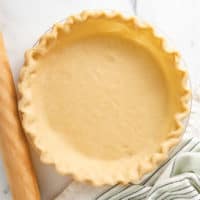
Ingredients
- 3 cups all-purpose flour, (plus more to dust the counter)
- 1 ¼ cups unsalted butter, cubed and cold
- 1 teaspoon salt
- ½ cup ice water
Instructions
- Place the flour, butter, and salt into a food processor. Pulse until the mixture resembles coarse cornmeal.3 cups all-purpose flour1 ¼ cups unsalted butter1 teaspoon salt
- With the food processor still running, very slowly pour in the water. Stop just as the ingredients begin to come together. There may still be some dry areas. If the ingredients can be pressed and hold together, there’s enough water.½ cup ice water
- Transfer the dough to a work surface. Continue to work the ingredients together, and form the dough into a ball. If it’s not holding together, add another tablespoon or two of water.
- Divide the dough into two equal parts, and flatten each disc slightly. Wrap the discs with plastic wrap, and refrigerate for 1 hour.
- After the dough has been in the refrigerator for an hour and had a chance to firm up, remove it from the refrigerator and allow it to sit at room temperature for about 10 minutes. Meanwhile, lightly flour a work surface and rolling pin. After the dough is warmed up enough to roll out, place it on the work surface and roll it out to a 12-inch circle about ¼-inch thickness.
- Fold the pie dough into fourths or gently roll into onto the rolling pin, and transfer it to an ungreased 9-inch pie plate. Unfold the pie dough onto the pie plate, and carefully press it into place. Using kitchen scissors, trim the outer edge of the dough leaving ½-inch hanging on all sides.
- Roll the excess up onto the edge of the pie plate, and use your fingers to crimp (flute) the dough. Place the dough back in the refrigerator for at least an hour before using in a recipe. Use the second crust as a top crust or save it for later.
- See post for storage recommendations.

